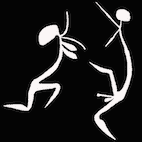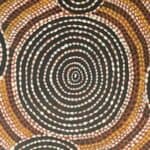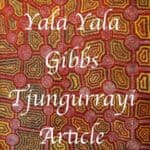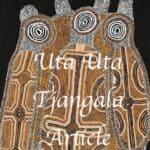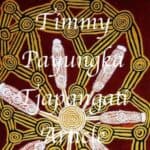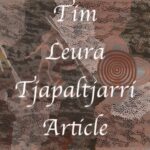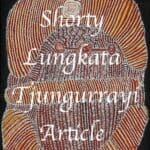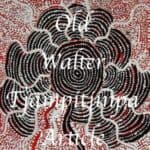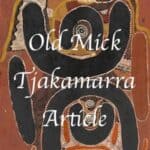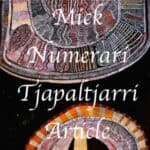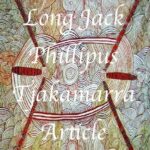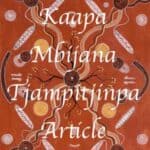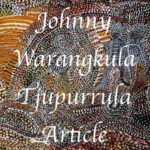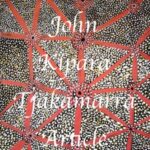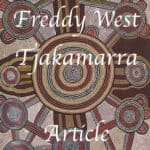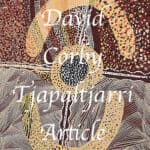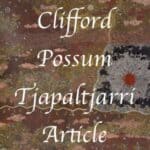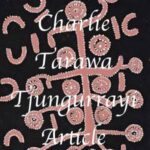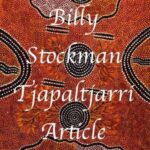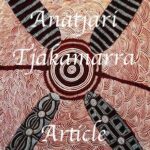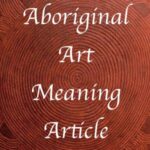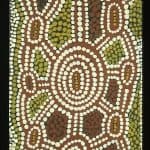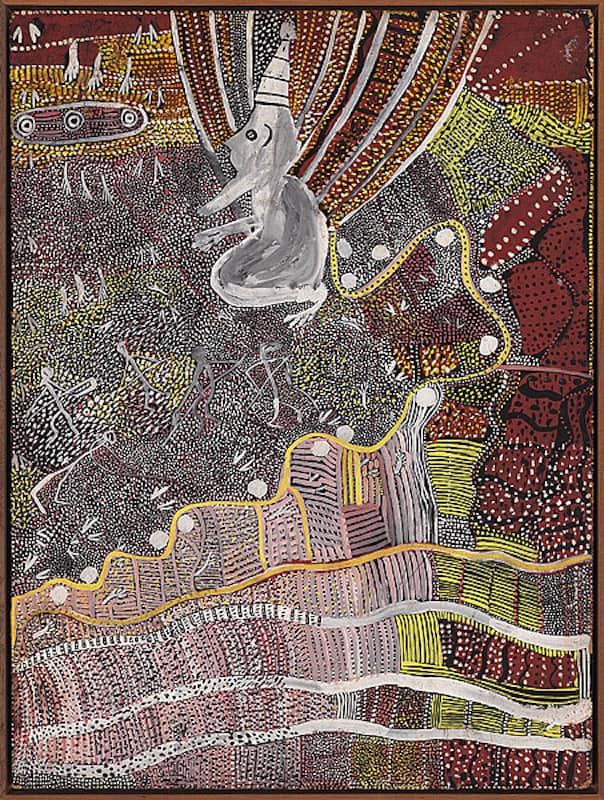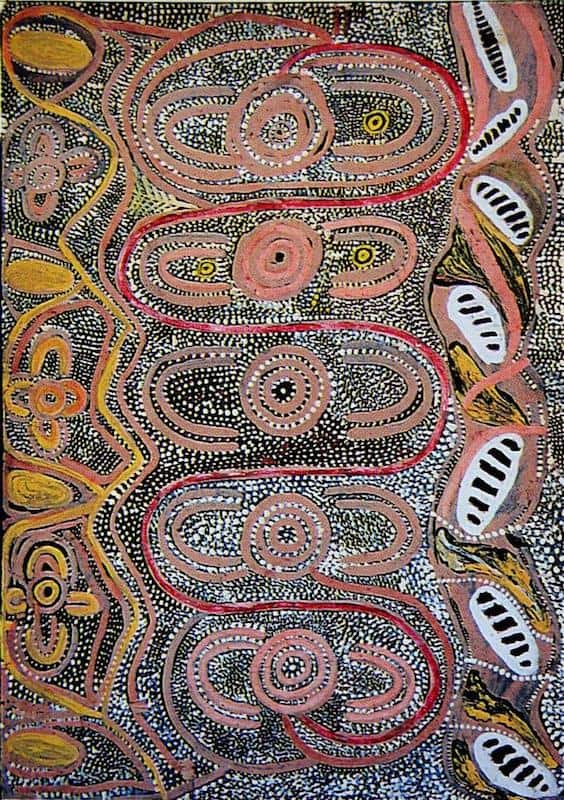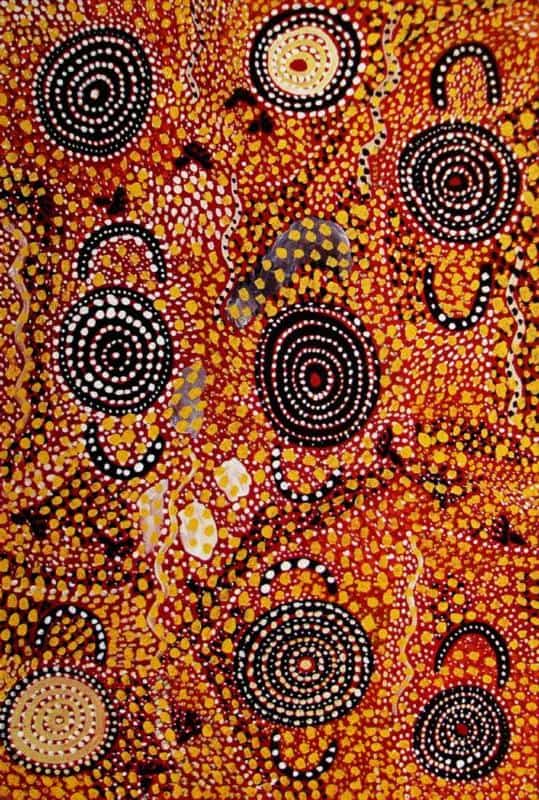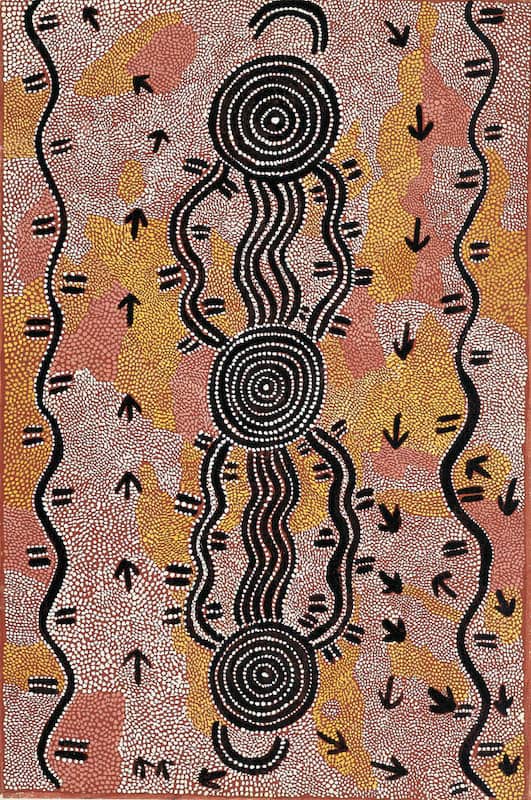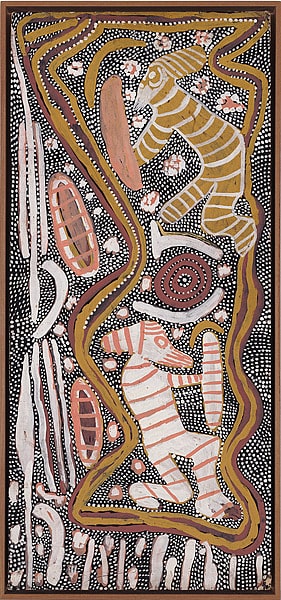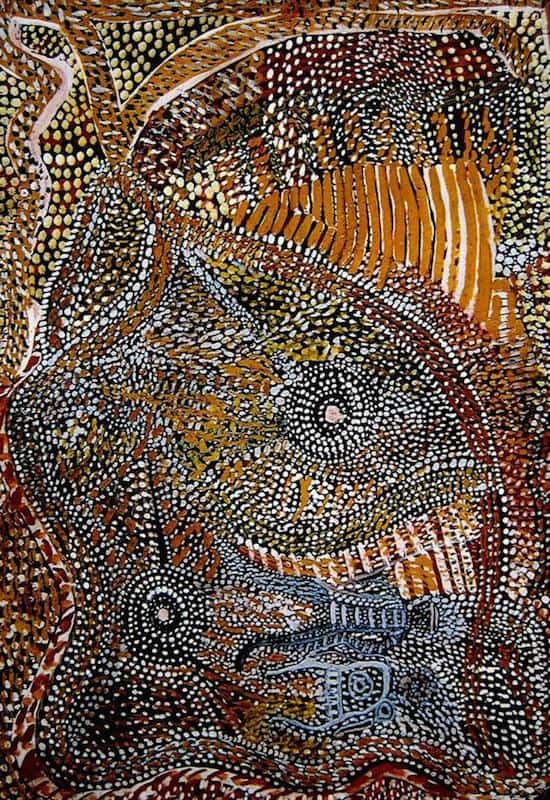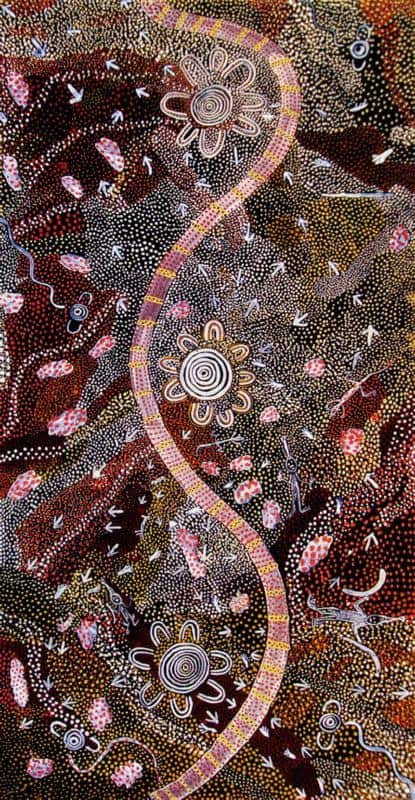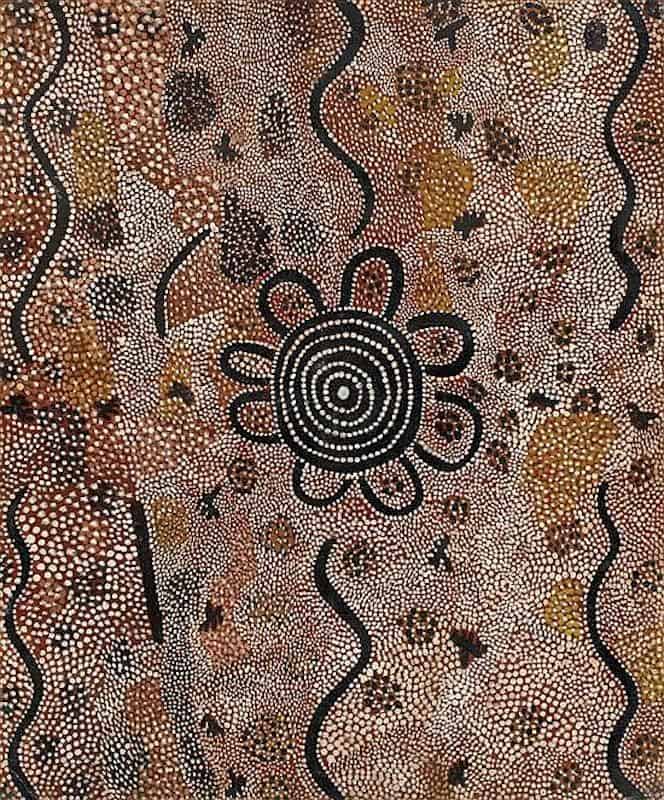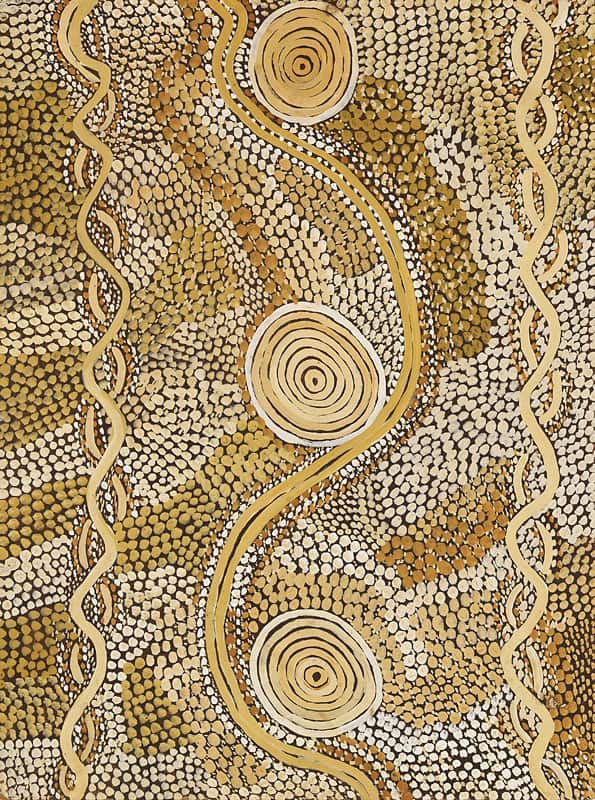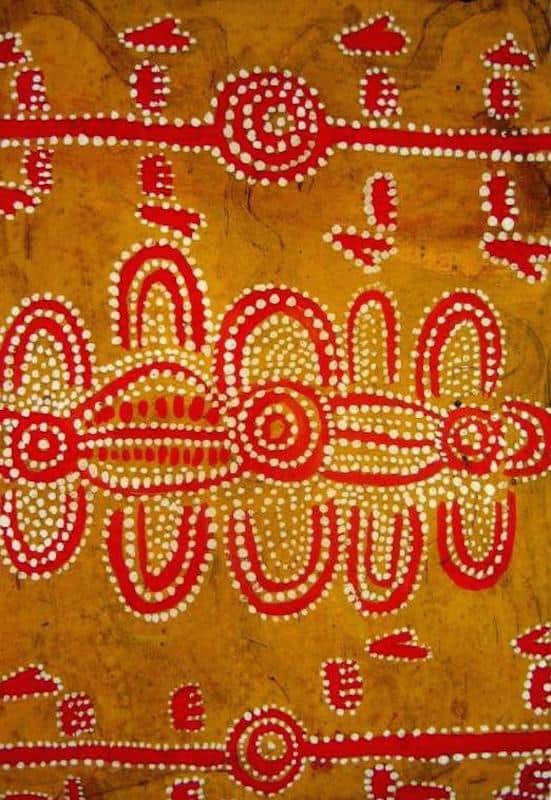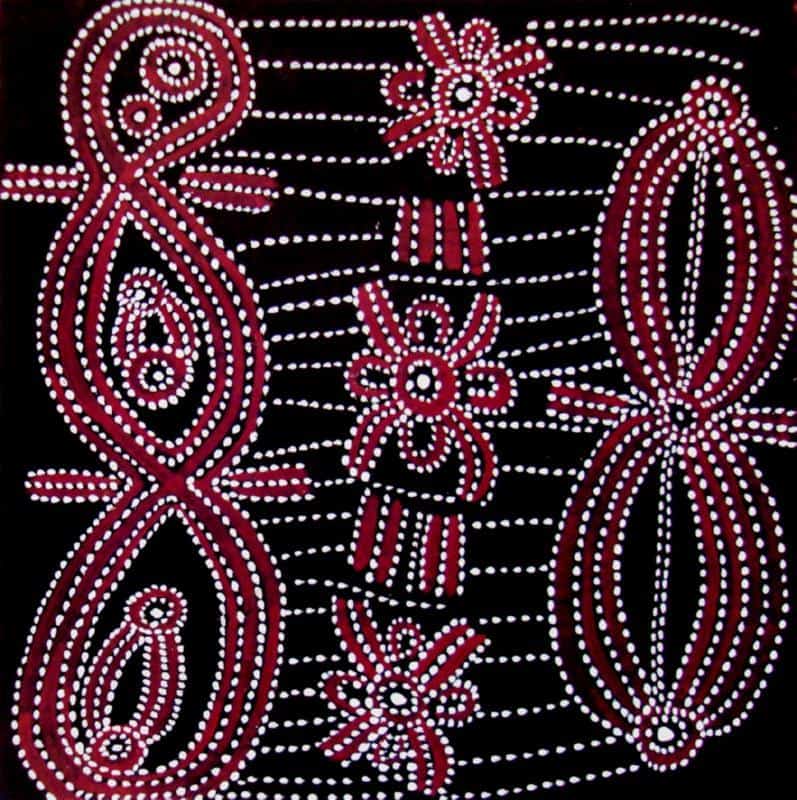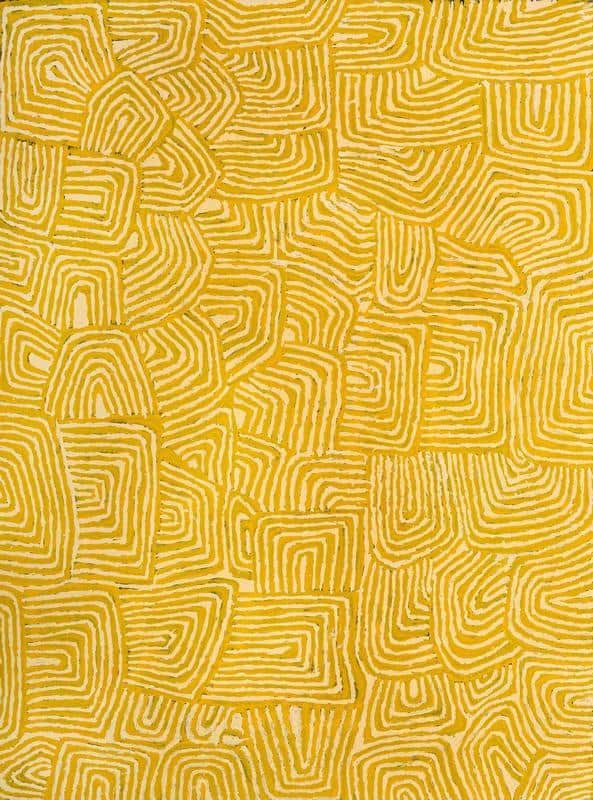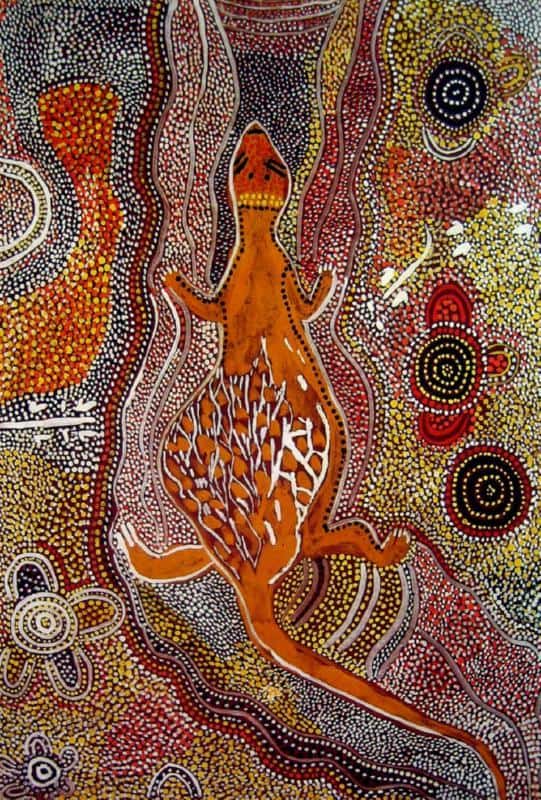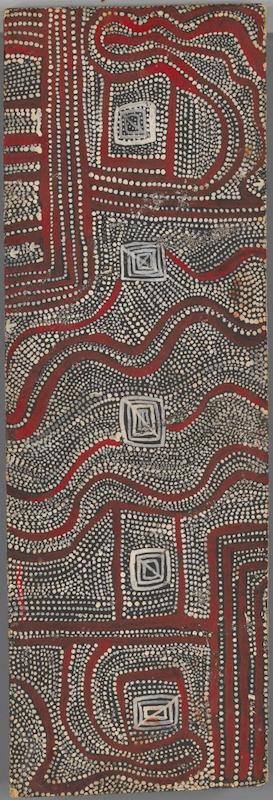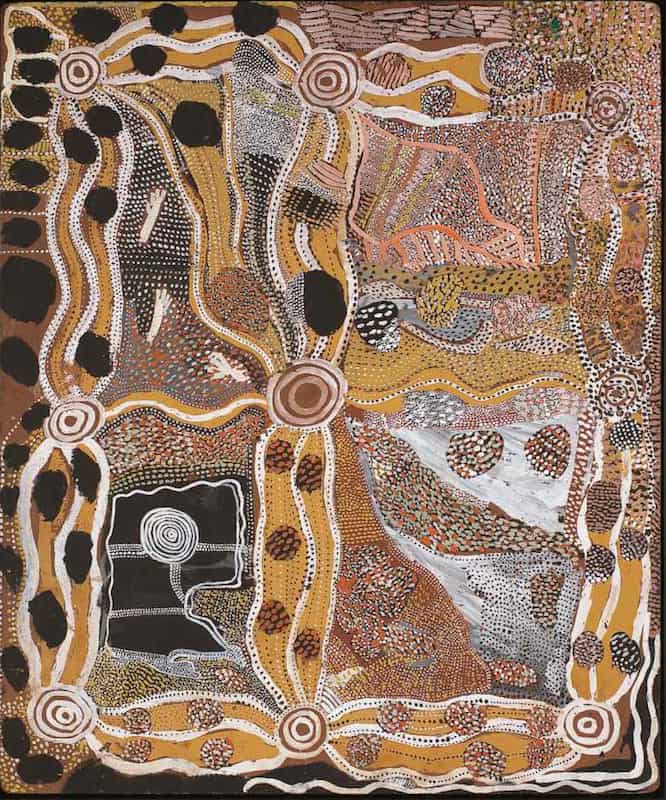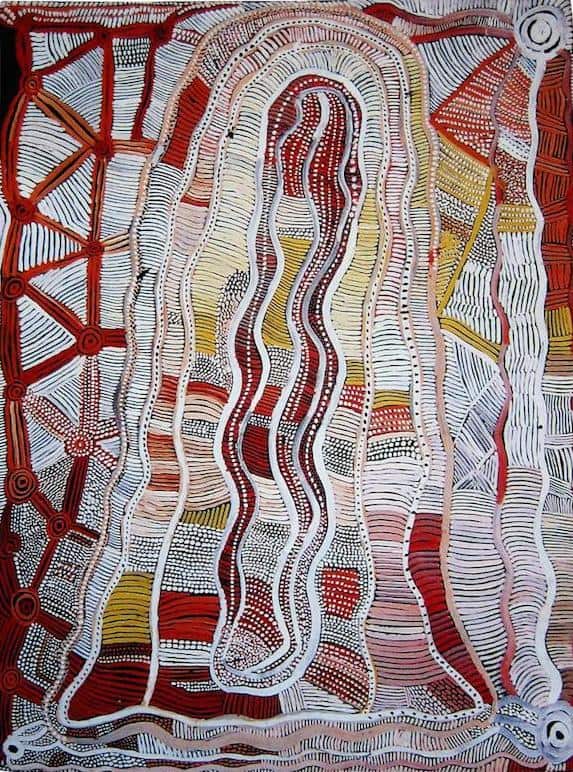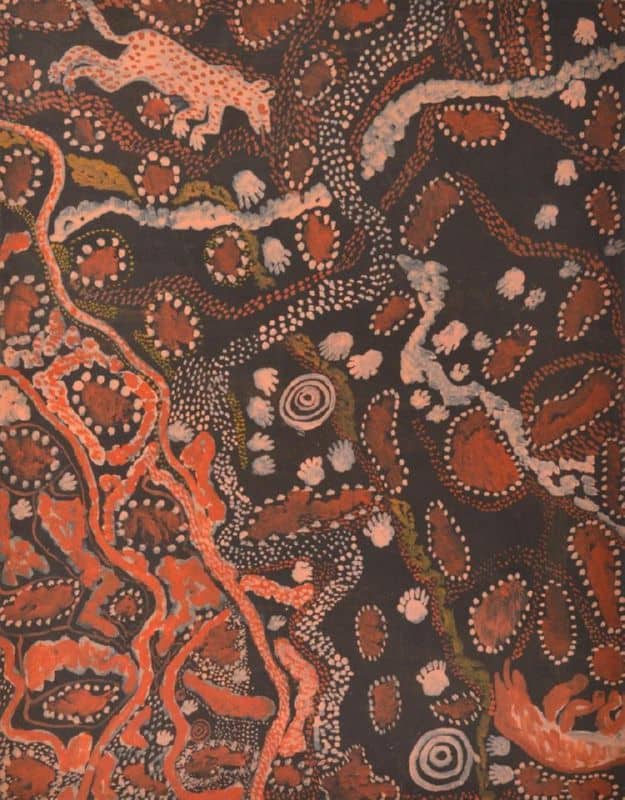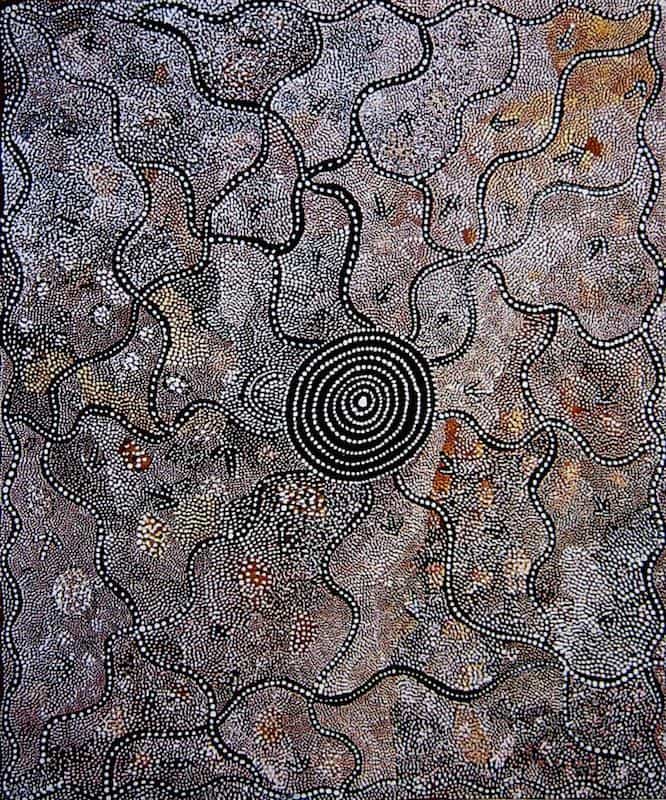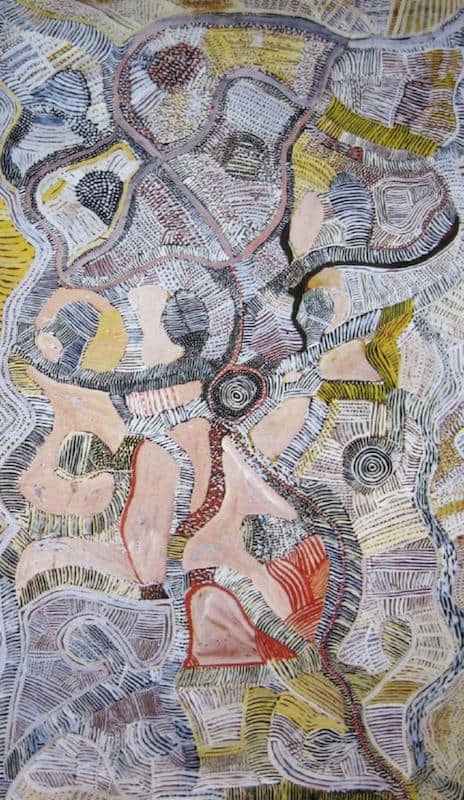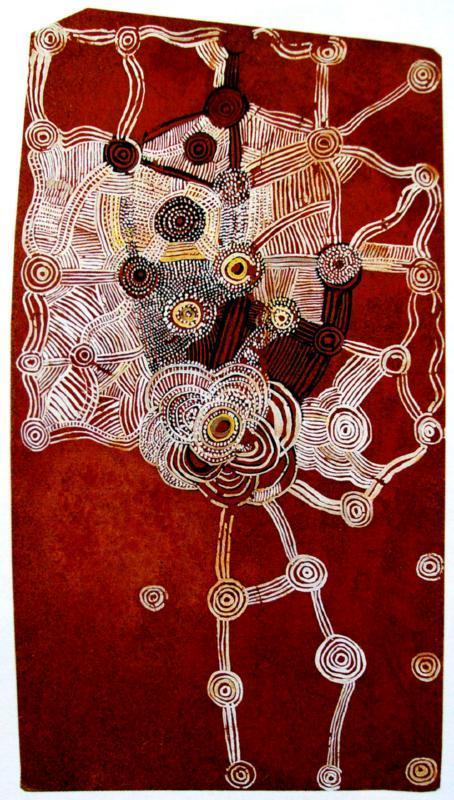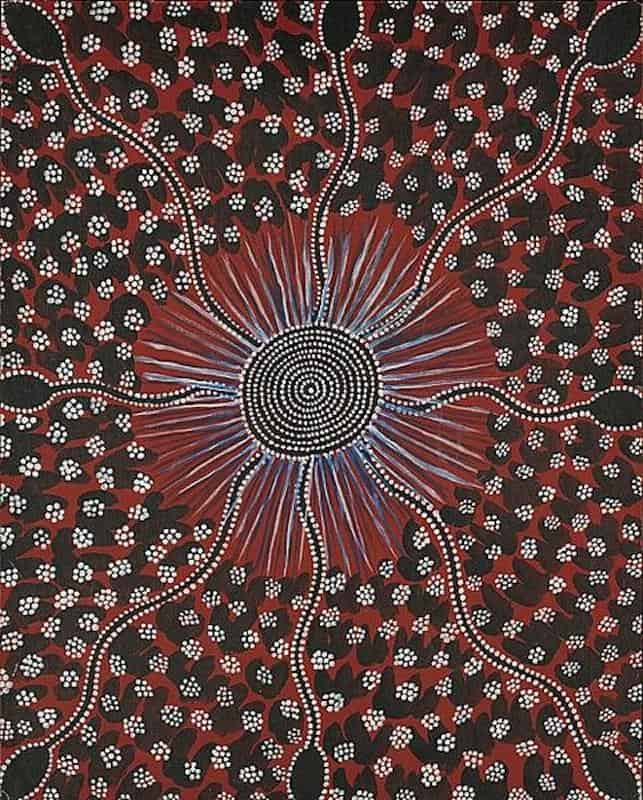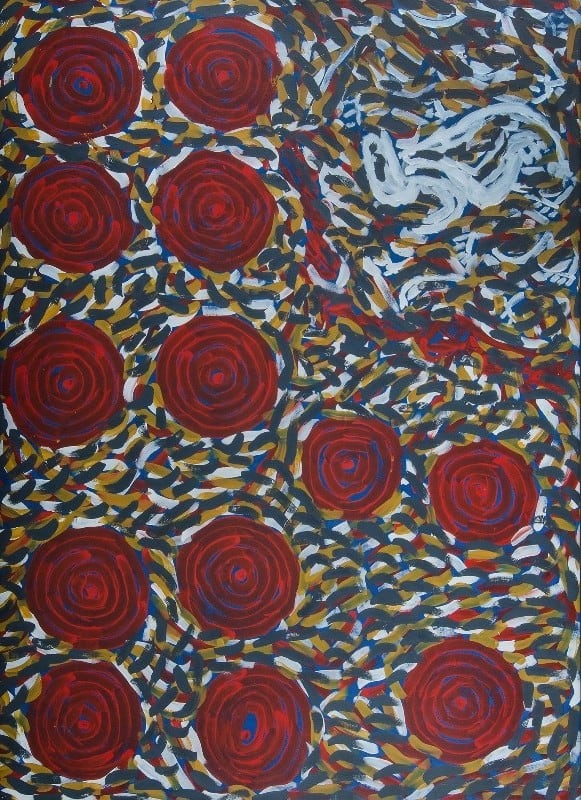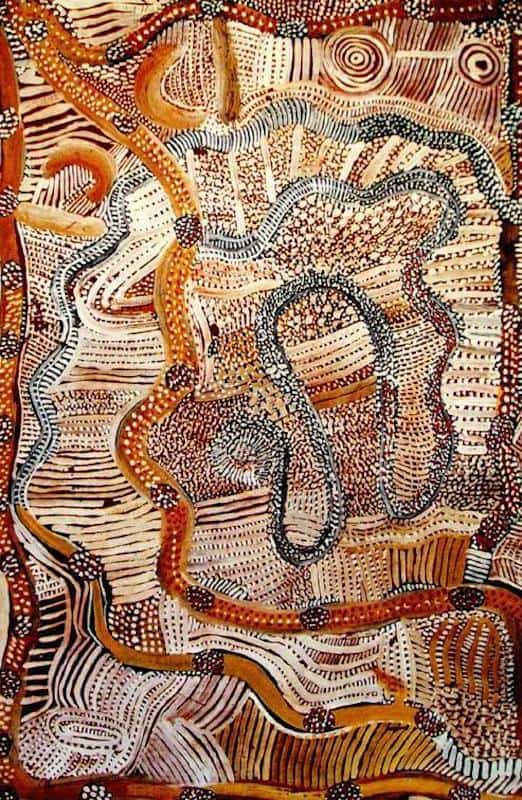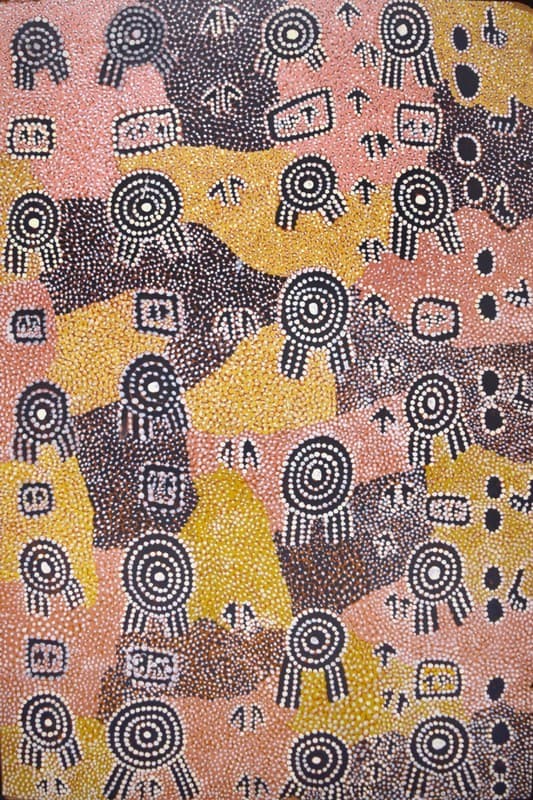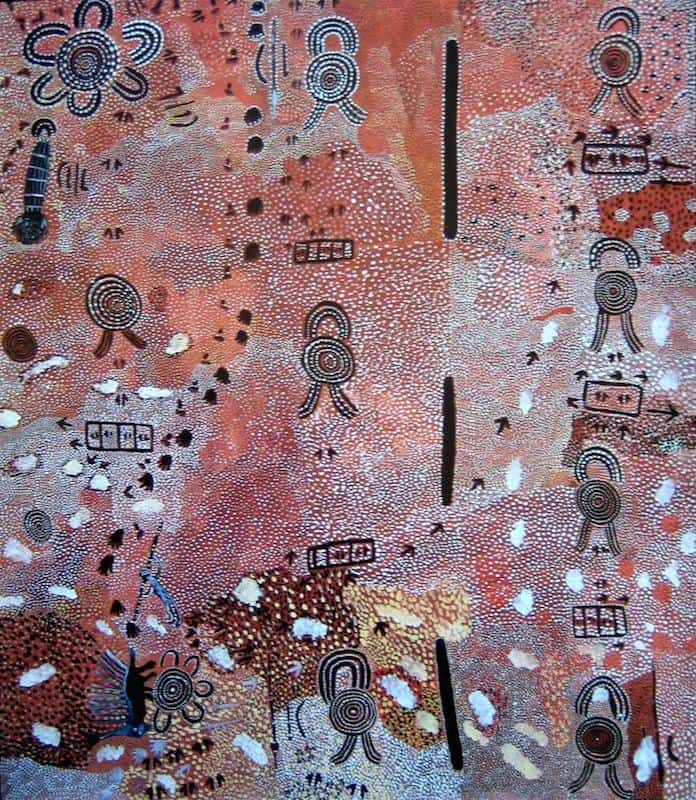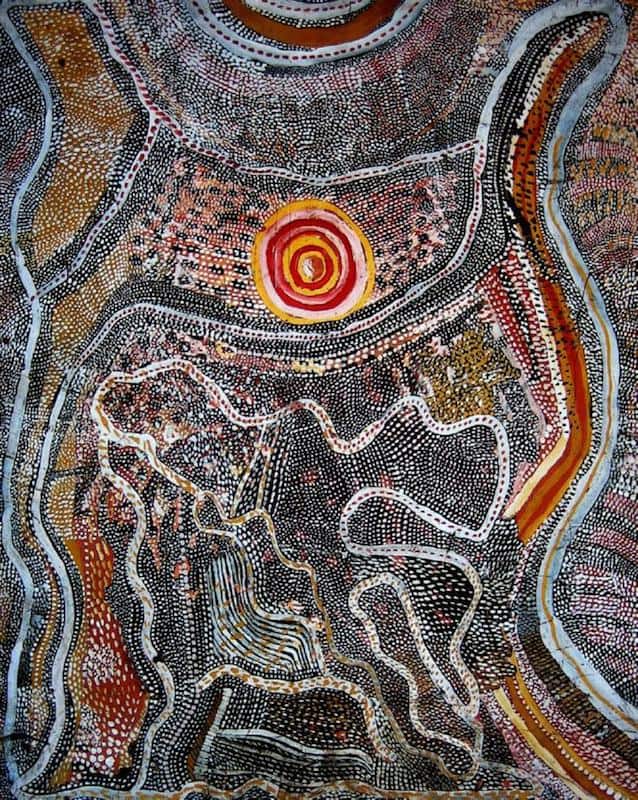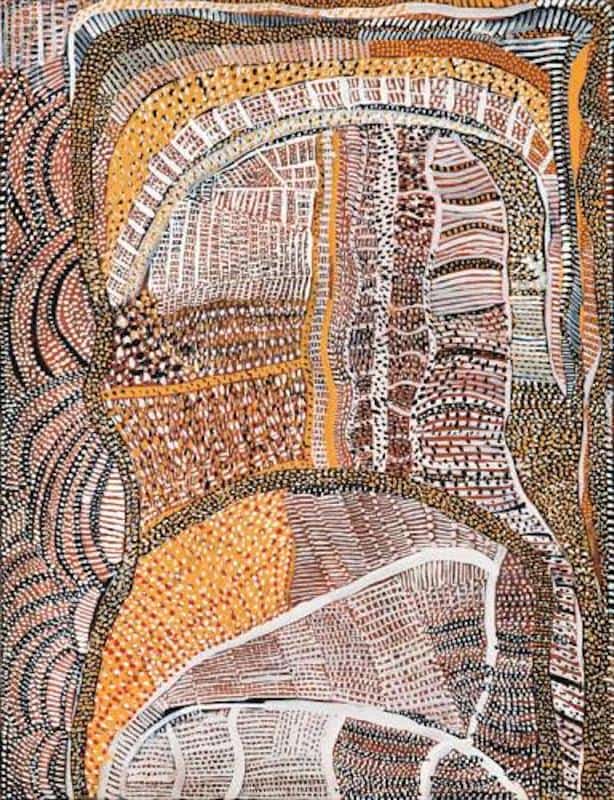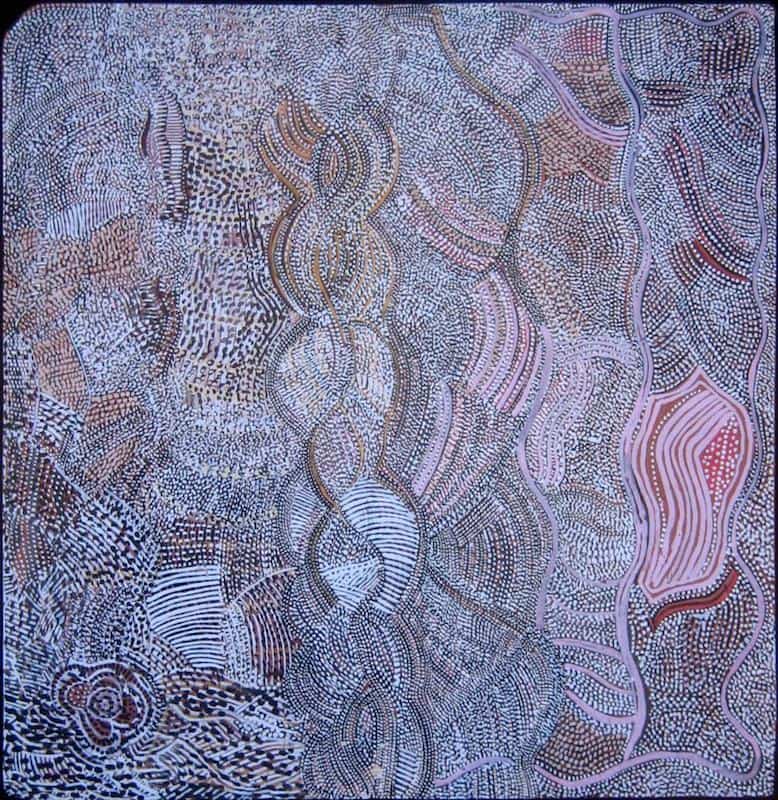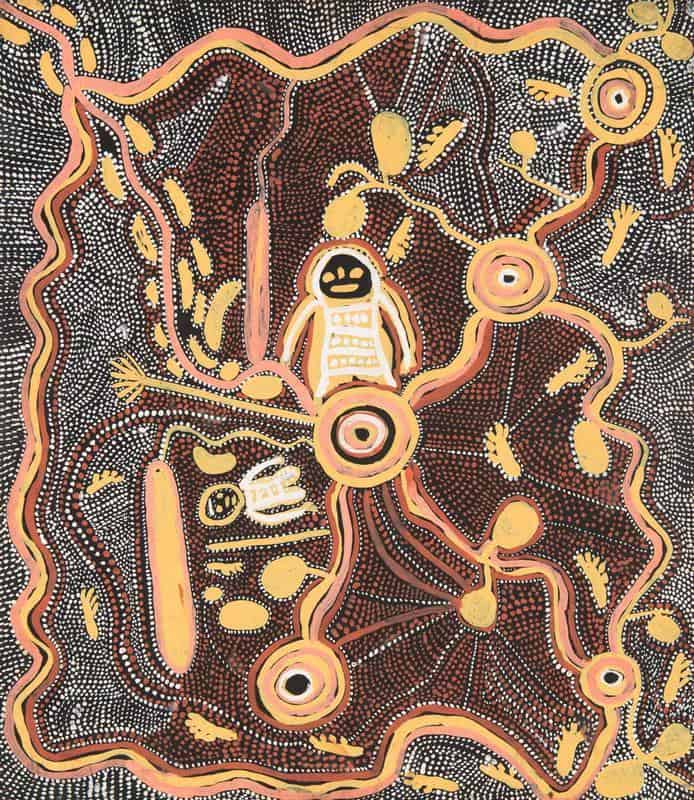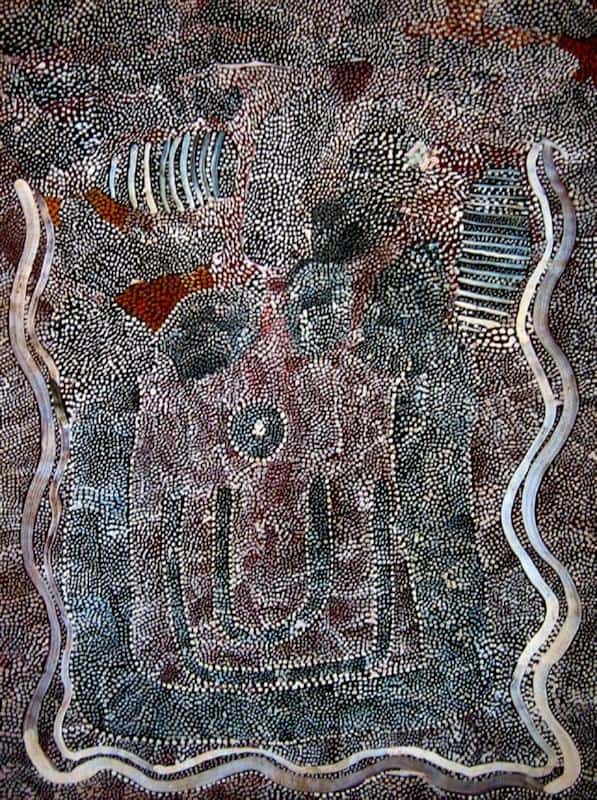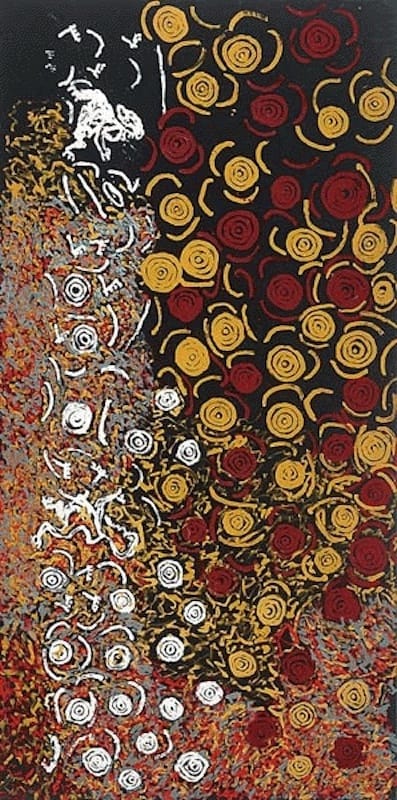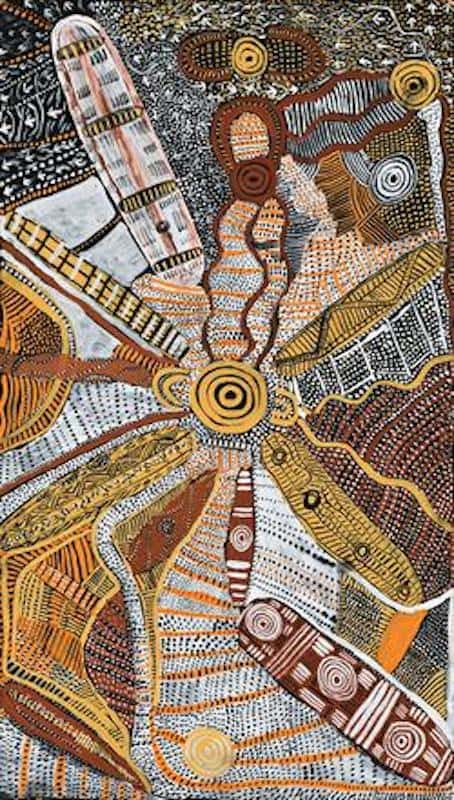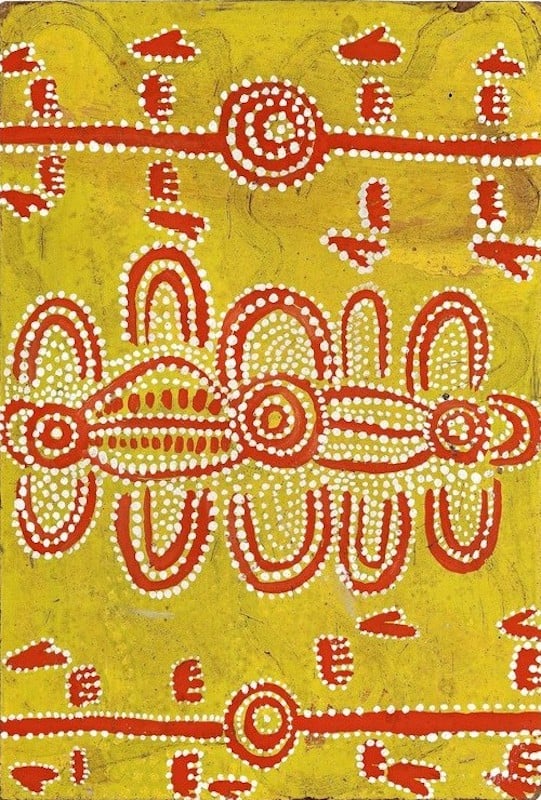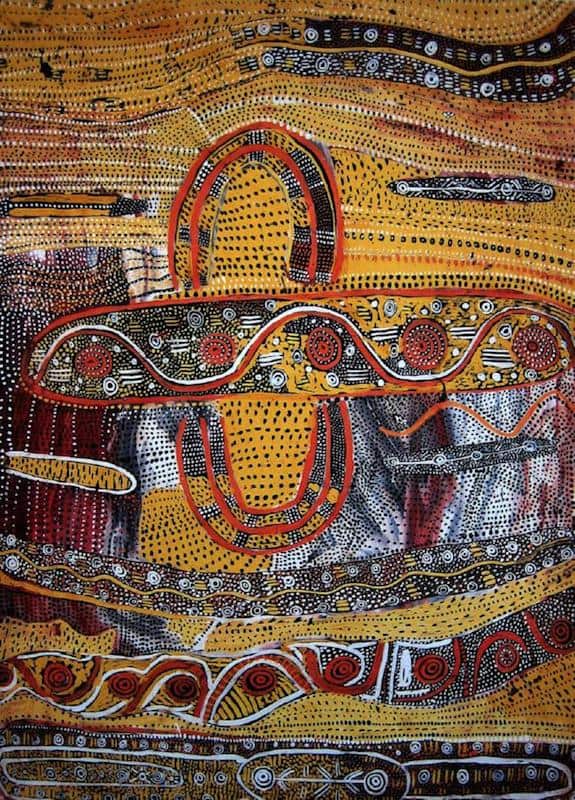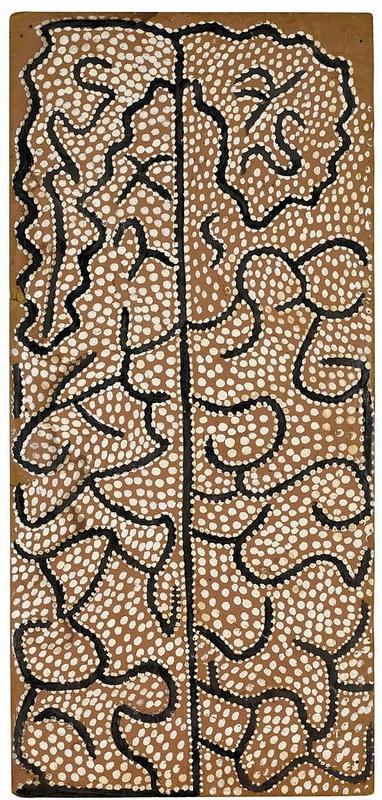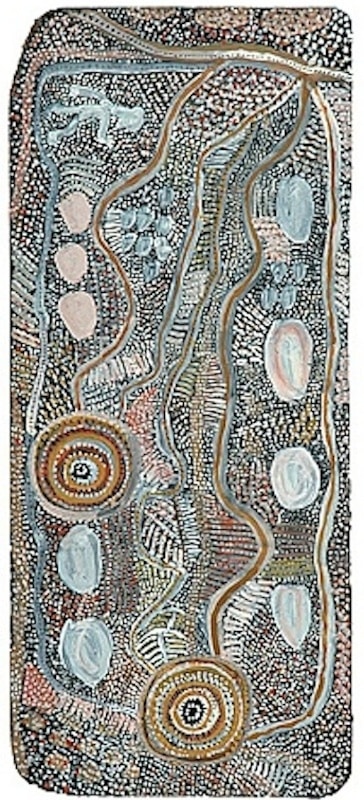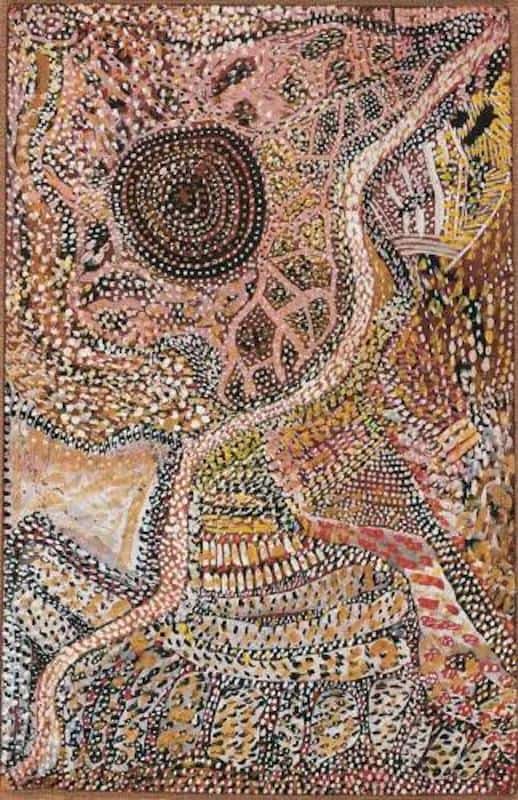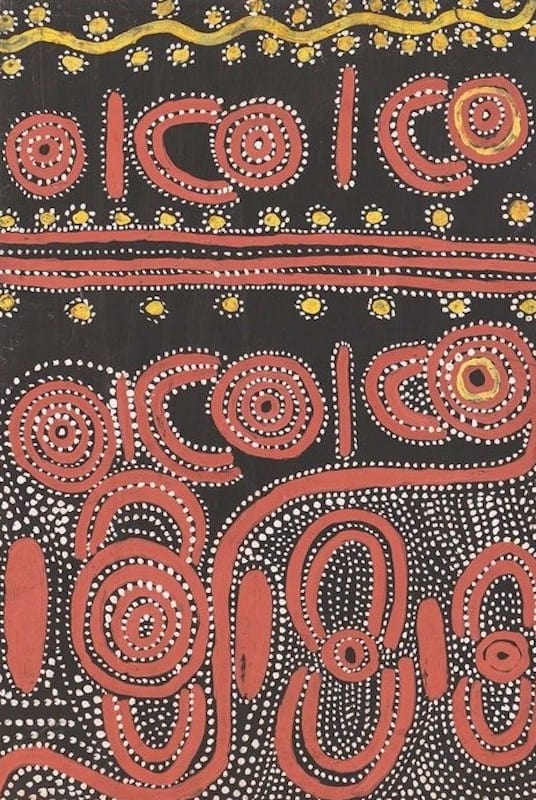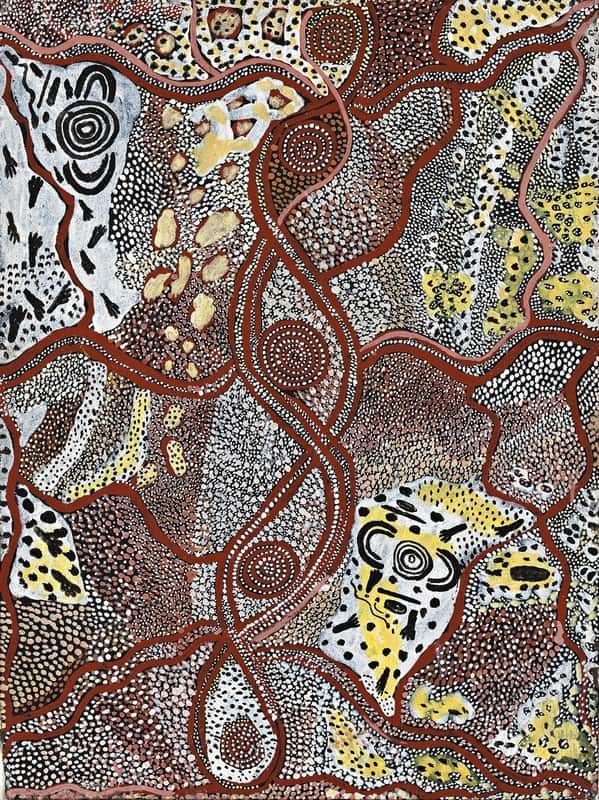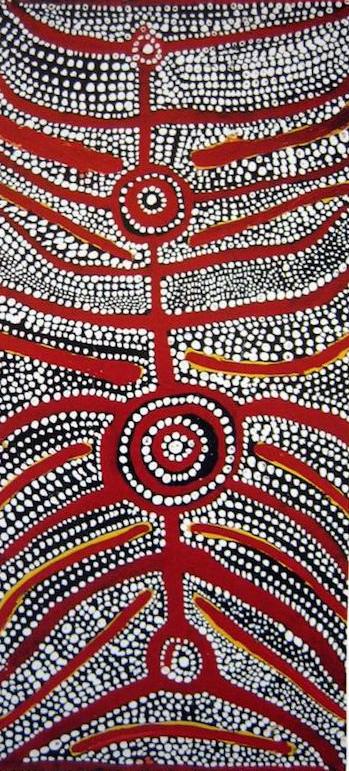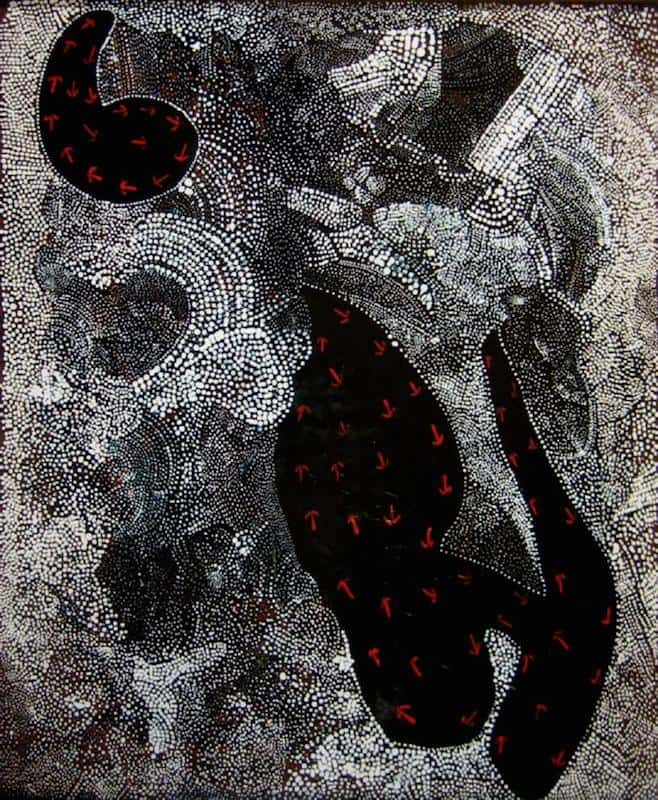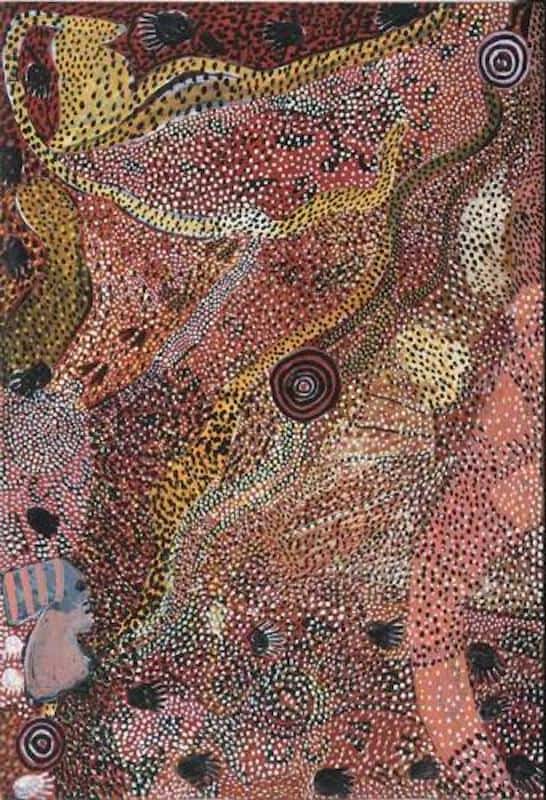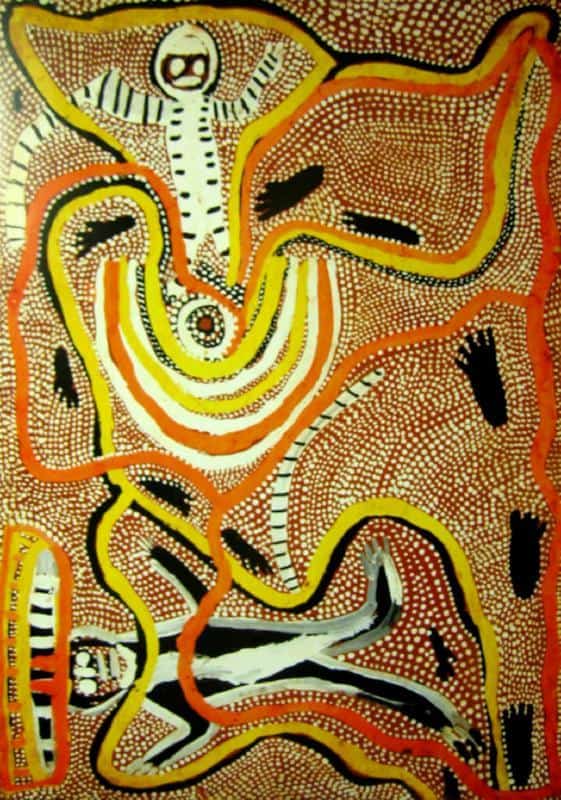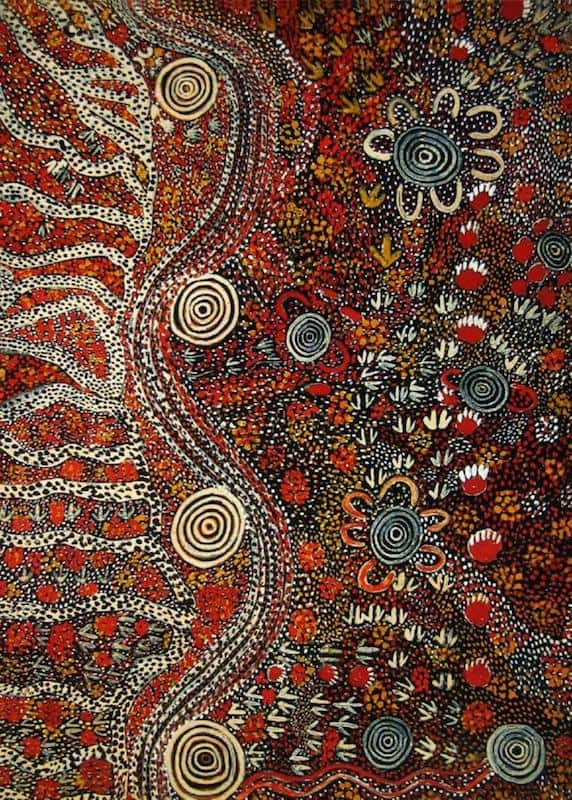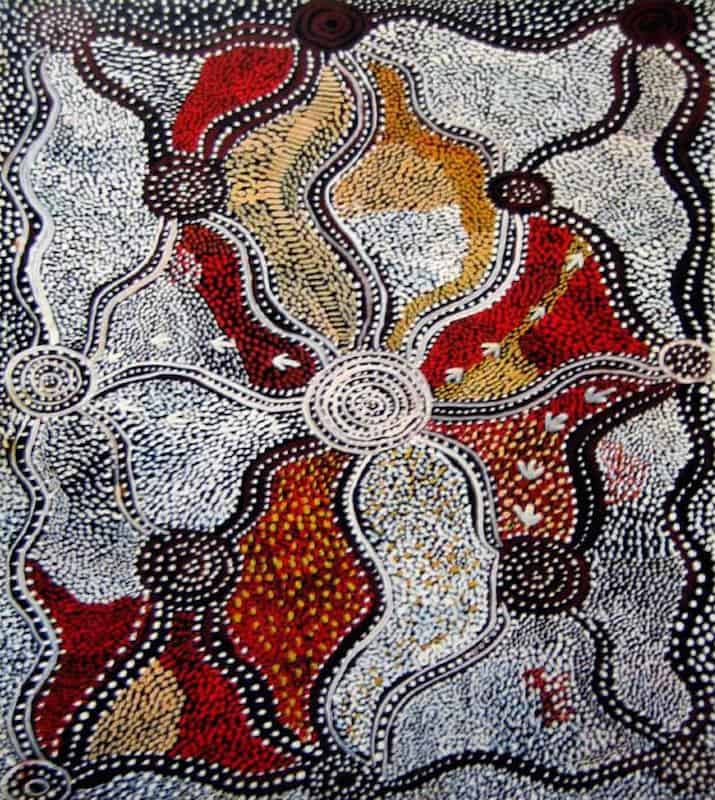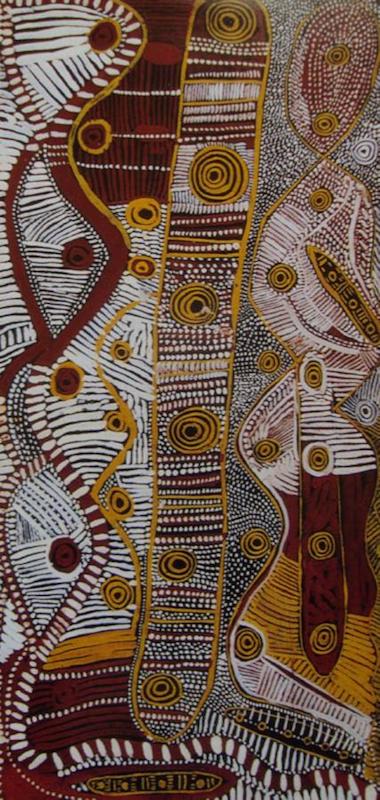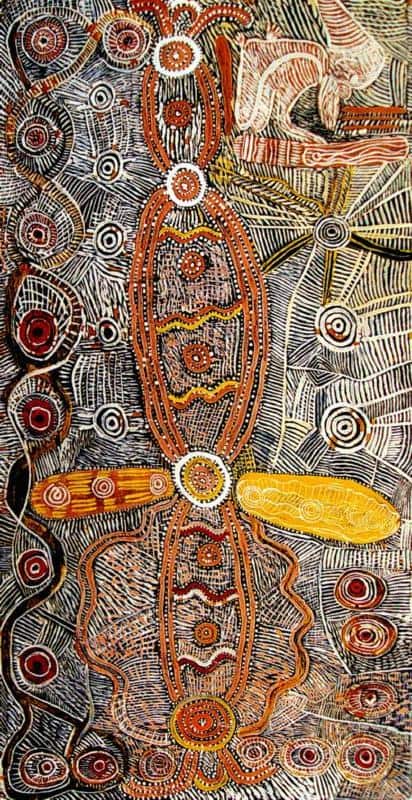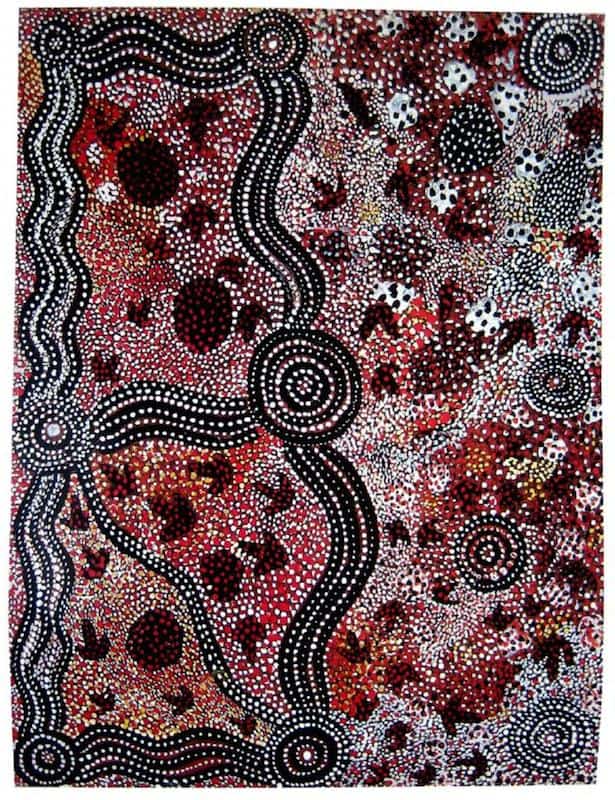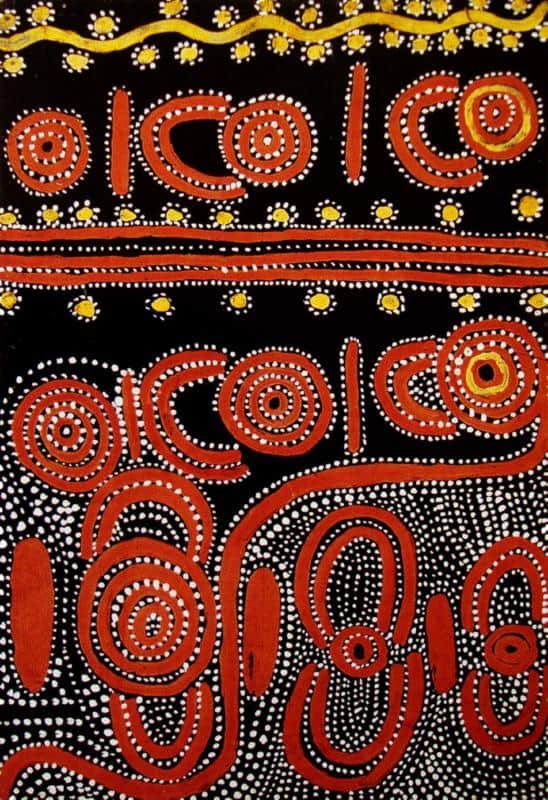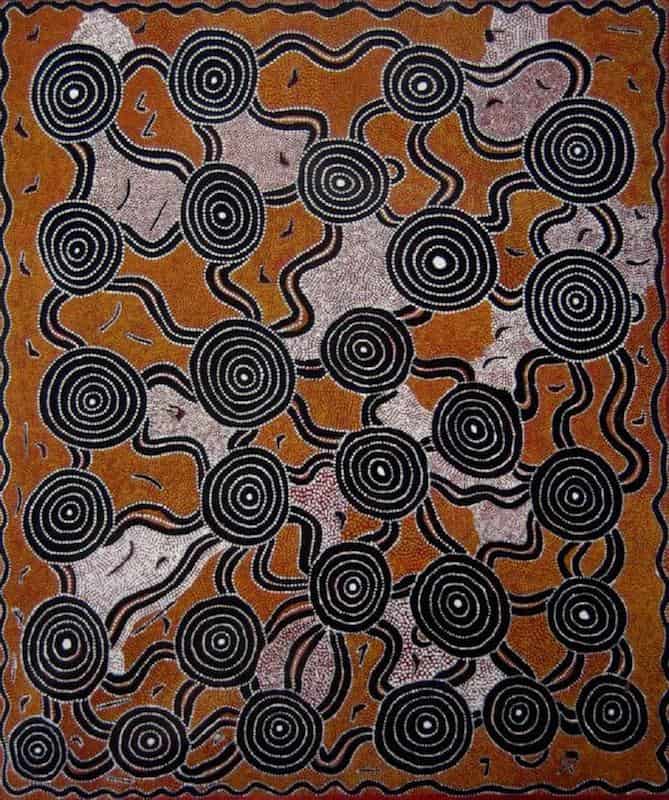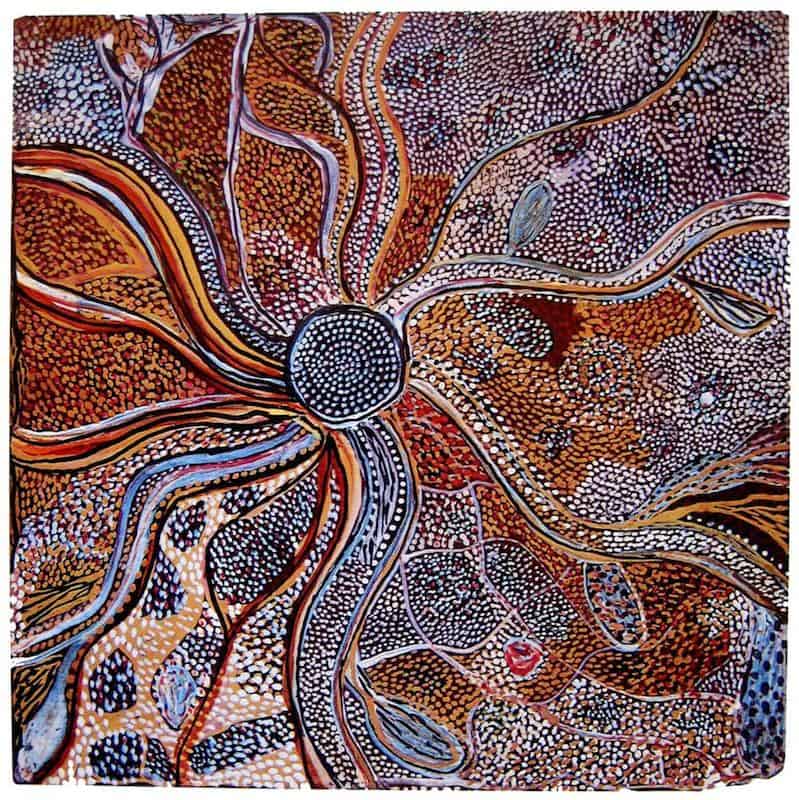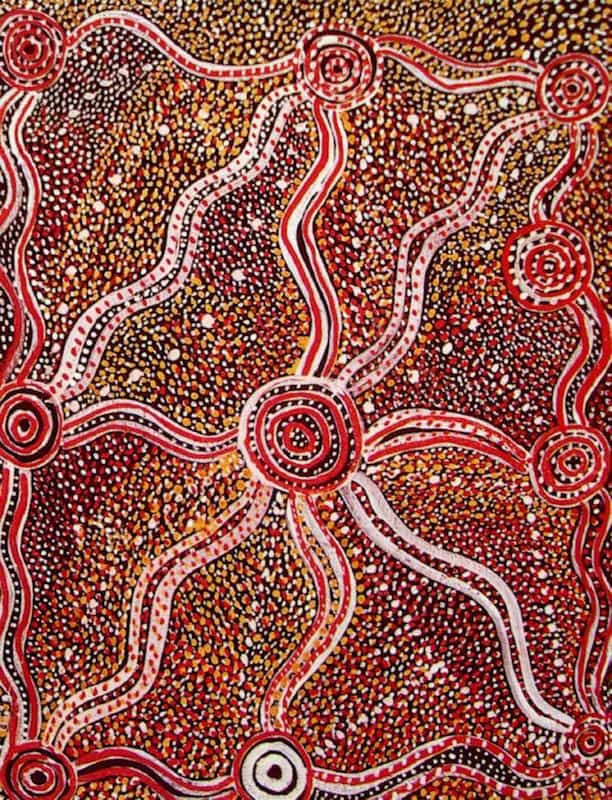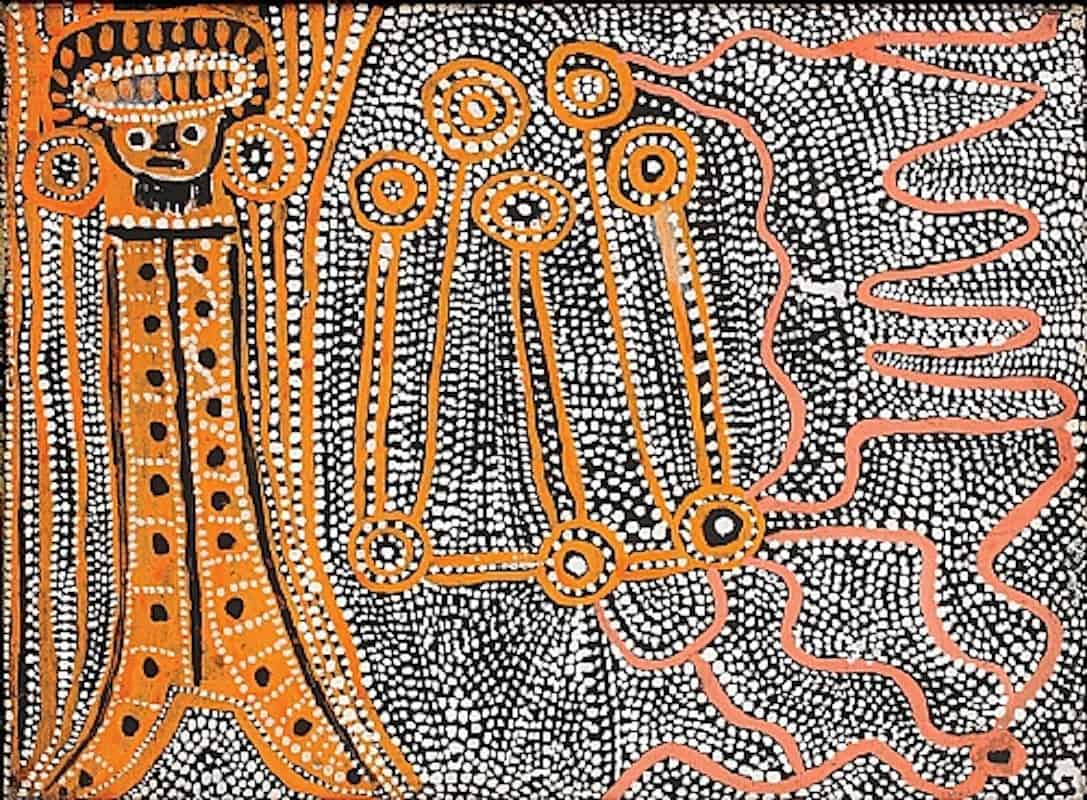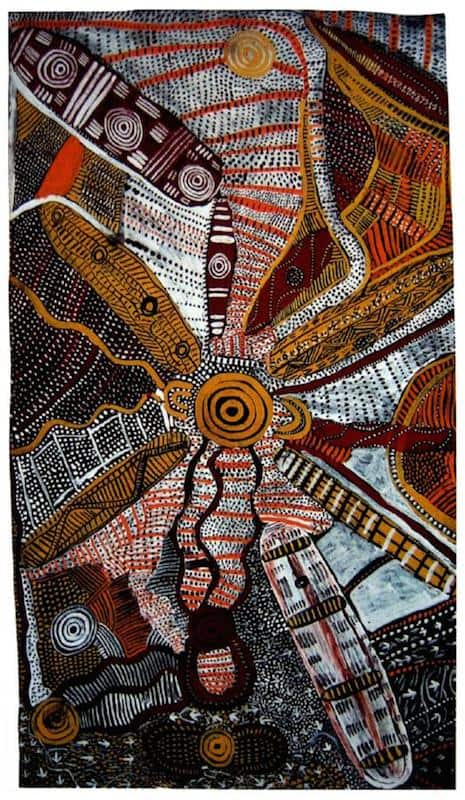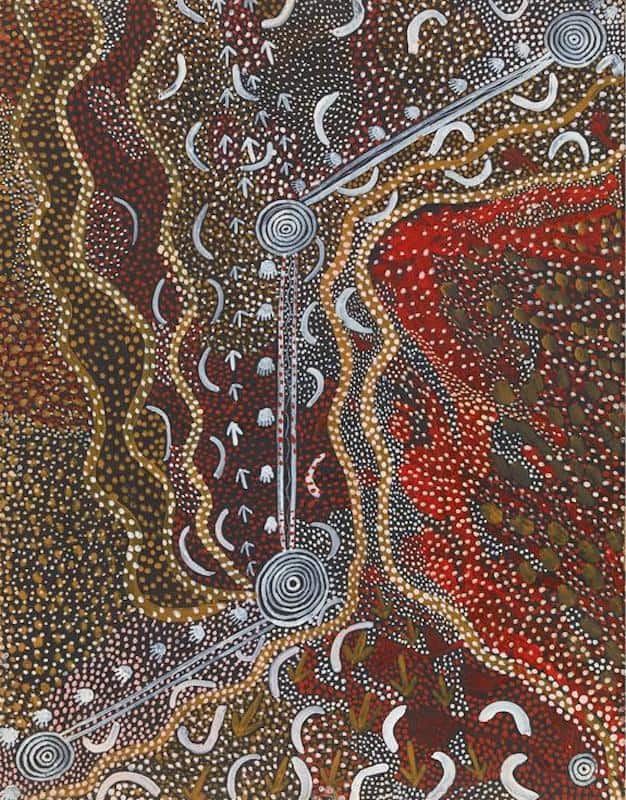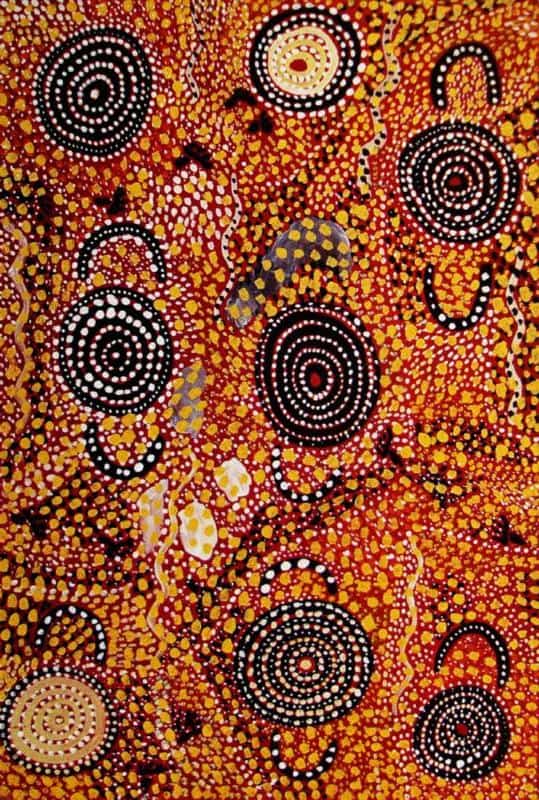Johnny Warangkula Tjupurrula
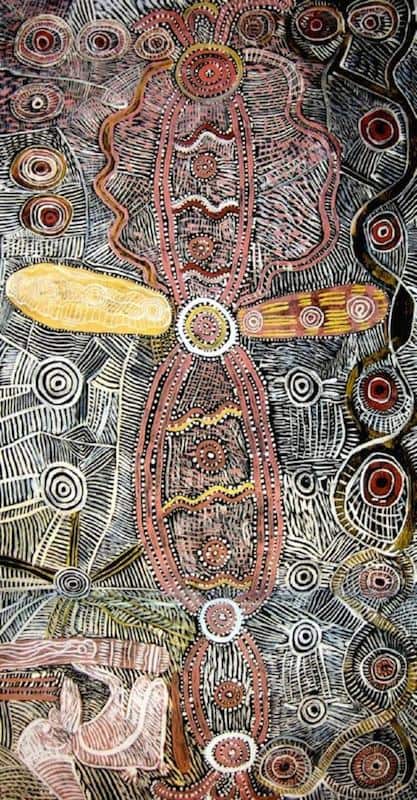
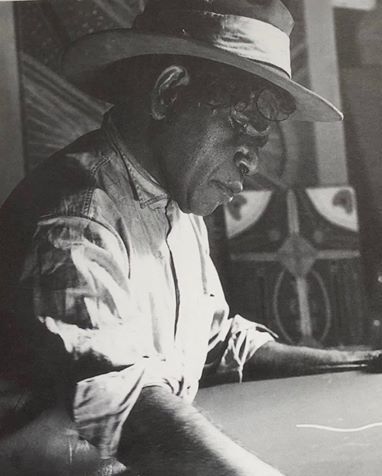
Johnny Warangkula Tjupurrula early Life
He moved into Papunya with his first wife in the 1960s. By the early 1970s like Long Jack Phillipus and Mick Namarari Tjapaltjarri he was a Papunya settlement counselor.
Early painting
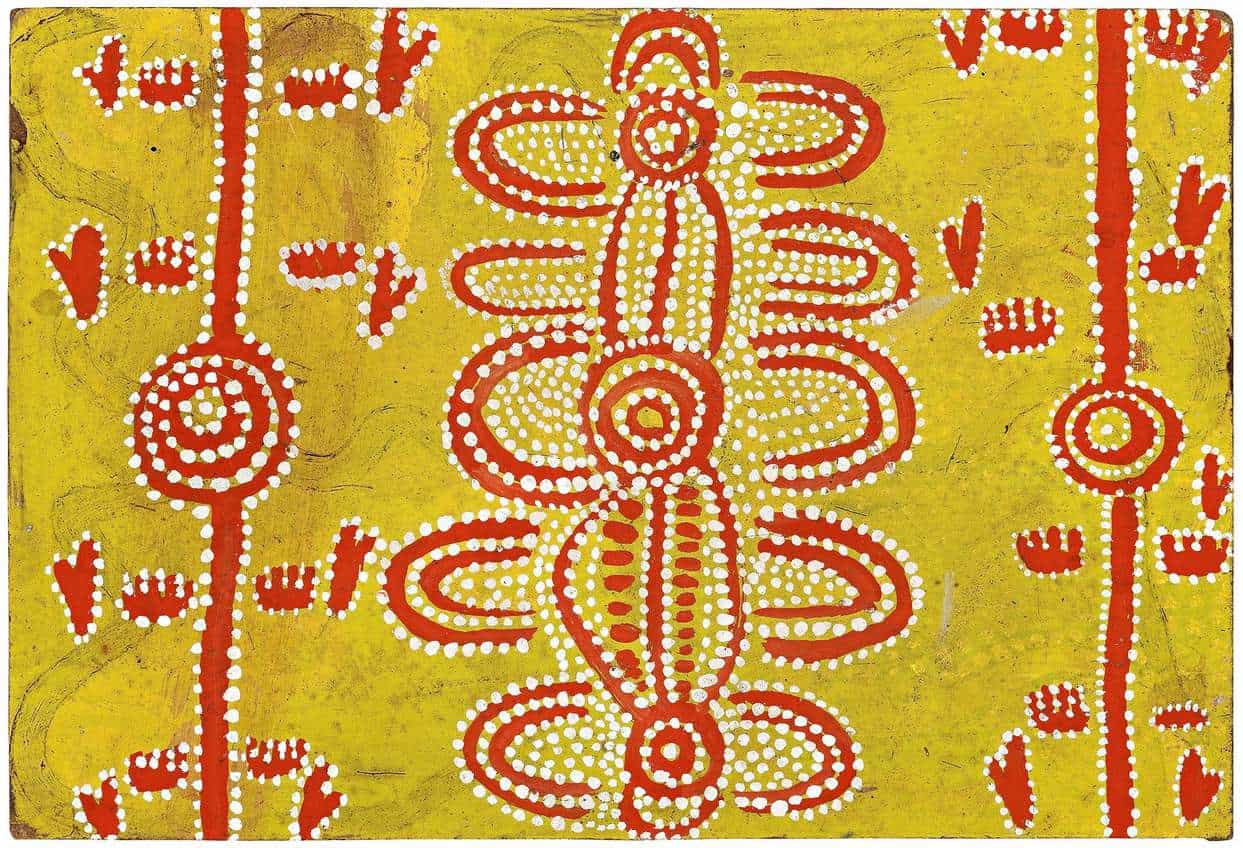
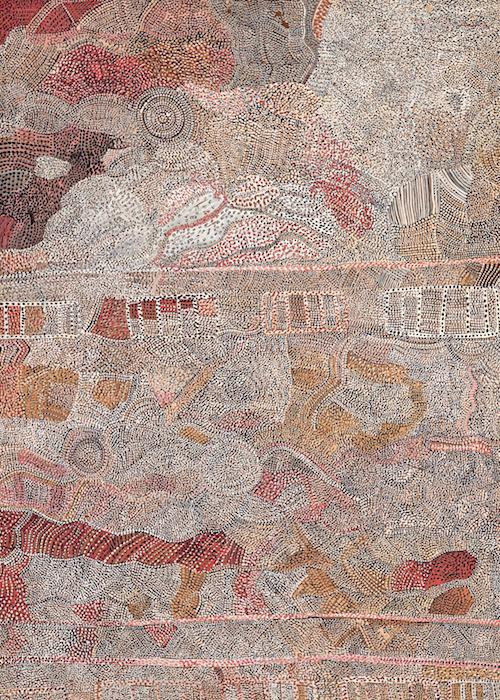
Winpa the rainmaker.
He was a custodian of the Kalipinya water dreaming which he shared with Old Walter and Long Jack.
Right: Johnny Warangkula Tjupurrula with a painted ceremonial shield.
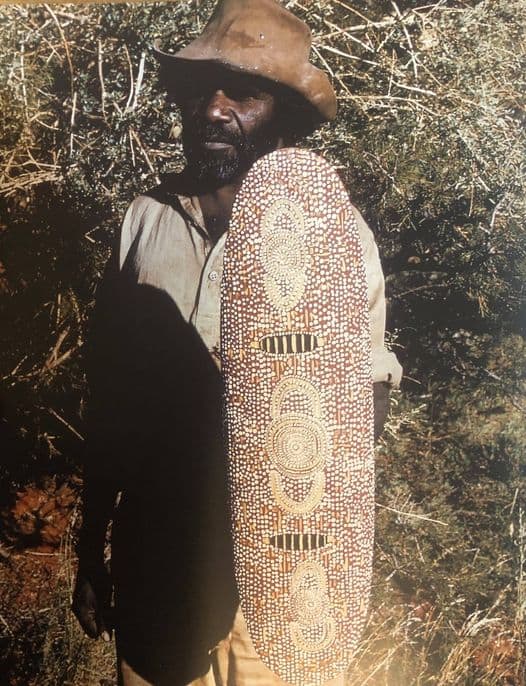
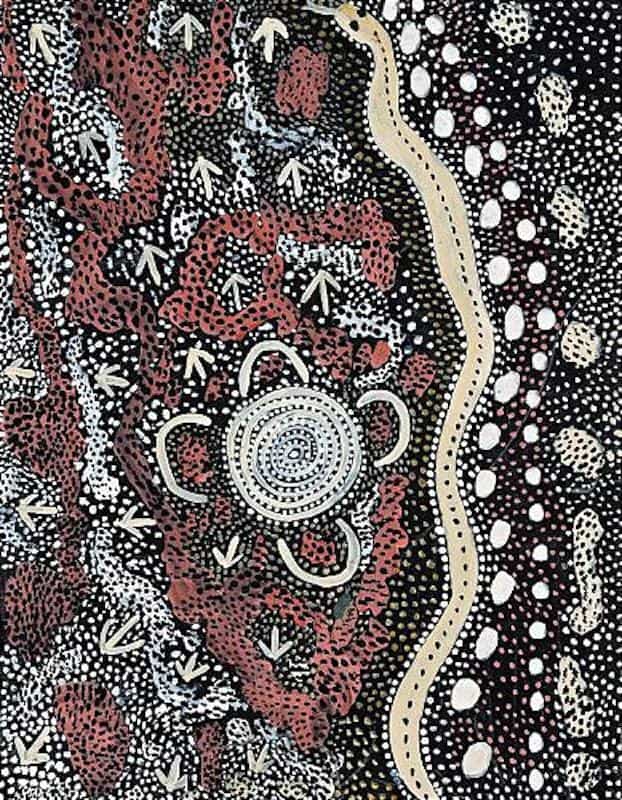
Johnny Warangkula Tjupurrula Middle Period
Johnny Tjupurrula Later Life
By the mid-1980s Johnny Warangkula Tjupurrula’s eyesight began to fail. His painting became infrequent and of poorer quality. By the end of the 1990s Warangkula was old and infirm.
These later paintings are not popular with collectors and hold little value.
In the 1990’s he started painting again and produced hundreds of raw expressionistic paintings. These later paintings though were crude and paled compared to his earlier works.
He spent the last years of his life with his wife and children in Papunya. His greatest legacy is the simple but enigmatic dot-dot background. It is so strongly associated with aboriginal art that it is now almost inseparable.
Warangkula Tjupurrula name can also be spelled Warangkula Djupurrula or Warangkula Jupurrula. His Christian name was Johnny
Warangkula Tjupurrula is sometimes spelled, Warungula or Warrangula
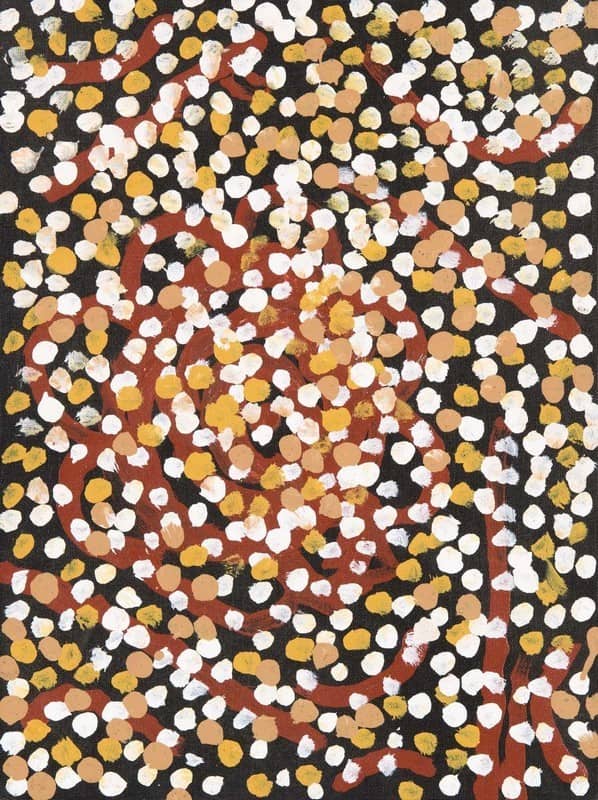
Johnny Warangkula Tjupurrula references
Papunya Tula Art of the Western desert
Johnny Warangkula Tjupurrula Value
My Database contains 57 artworks by Johnny that vary in value from $300 AUD – $212,000 AUD.
Many factors go into influencing the value of an artwork much more than only the visual image. The provenance, date painted size and importance of the work within the canon of work are also often crucial factors
If you have a Johnny Warangkula Tjupurrula artwork and wish to get a valuation please send me an image. Please include the size and any labels or extra information available.
Johnny Warangkula Tjupurrula Artworks explained
Rain, lightning and stars at night
This painting tells the story of rain and lightning rain and lightning and stars at night at Kaliginypa. The open circles represent the stars. The closed circles are caves in the rock. To the right is a ancestral spirits’s track.
Winpa, an ancestral figure who generated a huge storm at Kalipinypa he is present but hidden. If you look carefully a procession his red footprints are partly concealed with white dots on the right-hand side of this work.
Warangula’s created this first major work, Rain, lightning and stars at night in a style more consistent with works produced in mid to late 1972. Covering secret sacred meaning with dots lead to a dotting technique now inseperable from Aboriginal Art.
The painter overlays and intersecting sinuous lines trace the movement of waterways by the falling rain.
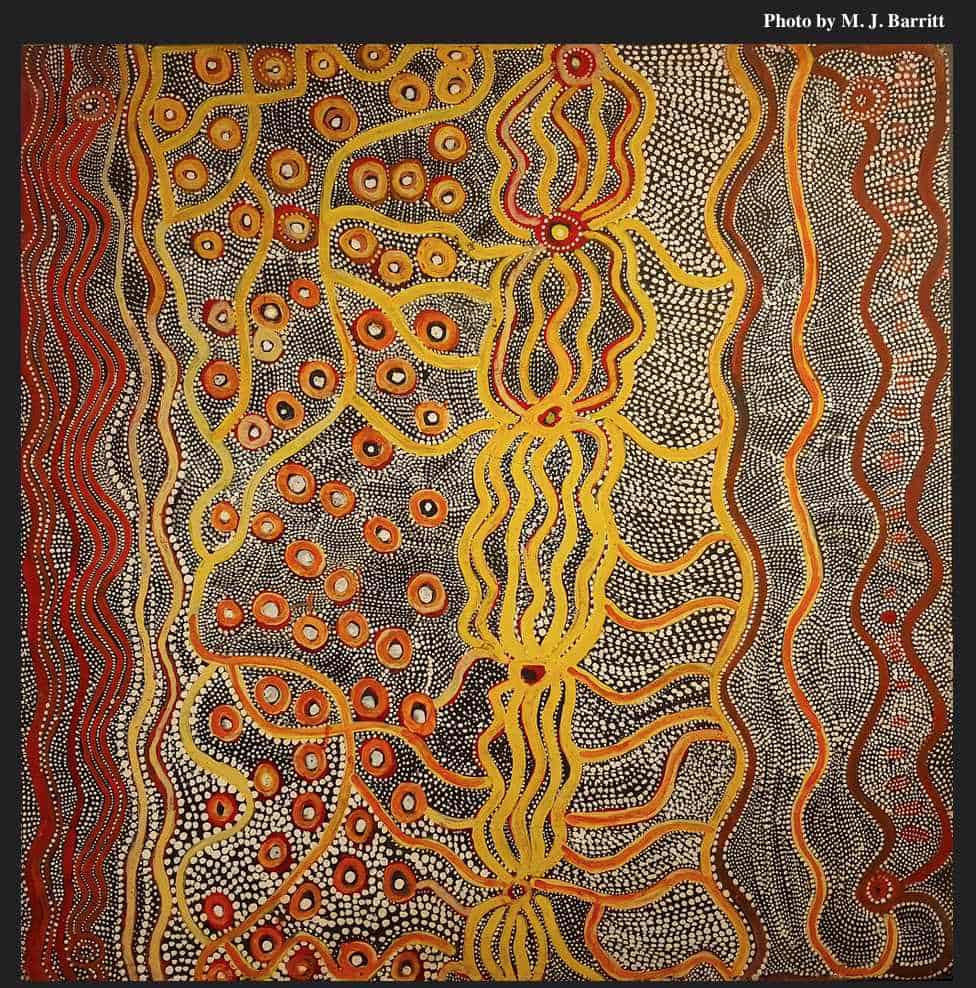
Painted 1971, synthetic polymer paint on chipboard.
Women camped at Kampurrula
Women’s Dreamings are rare in the corpus of paintings by Johnny Warangkula Tjupurrula. This painting features two women’s camps in luxuriant fields of bush tucker nourished by the rains created by the ancestor beings.
The artist well known for his early paintings of Rain and Water Dreamings of Kalipinypa, Tjikari and Ilpilli. Kampurarrpa (Kampurrula) is a site close to Ilpilli in the Ehrenberg Ranges. The painting shows two camps; the women, symbolised by the double-U forms either side of a set of concentric circles,. Their equipment of digging sticks and oval carrying dishes coolamon are clearly shown. Their footprints, leaving and returning to the camps suggest a series of foraging expeditions. These footprints also mark the choreography of dance ceremony.
The set of concentric circles that run vertically through the composition represent waterholes. The continuous lines that weave around these relate symbolize rain and flowing water. The red lines that meander laterally and diagonally across the picture possibly represent a vine (ngalyipi). This vine is woven by women into ceremonial dress.
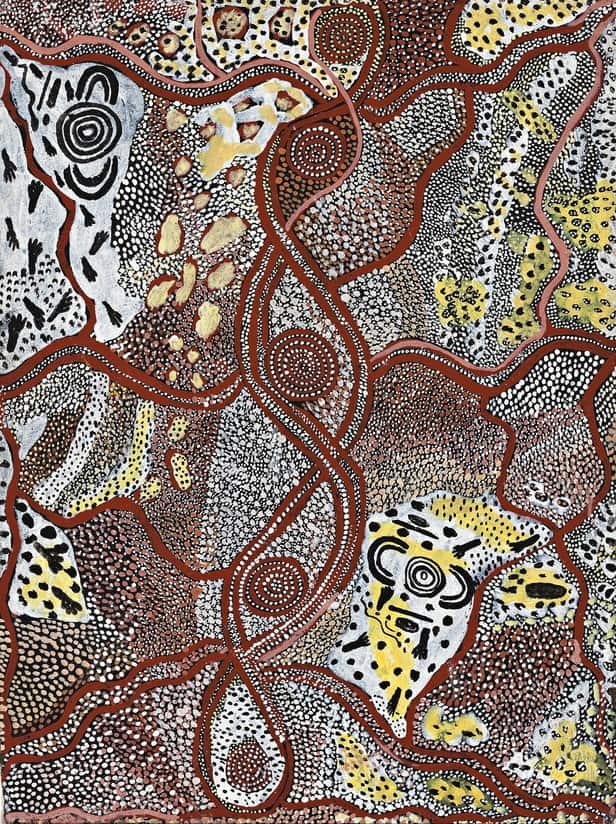
Painted synthetic polymer paint on board 58.0 x 43.0 cm
Mala Rufous Hare Wallaby Dreaming
Mala, Rufous Hare Wallaby distinctive inhabitant of the Western Desert. The hare-sized animal sheltered in needle-sharp tussocks of mature spinifex.
Fire was used by the Pintupi to flush Mala from cover, so hunters could dispatch the wallabies as they fled.
Johnny Warangula was intimately associated with the Mala ancestors. He inherited custodianship of the Dreaming from his father and grandfather, who were born at Tjikarri. There are two distinct narratives associated with Tjikarri. The first involves the Nananana men hunting Mala with fire. The second the journey of an old sorcerer who, with the aid of a Mala horde, pursues a giant dingo-like creature, Matinpilangu.

Mala, Rufous Hare Wallaby Dreaming Painted 1971 with synthetic polymer powder paint on composition board 23.0 x 34.5 cm
The Mala Dreaming provides an iconographic representation of ceremonial ground and the movements of performers as they reenact the deeds of the Mala ancestors. The central motif provides a planar view of the ceremonial area. U-shapes are figures seated around an attenuated performance area. The tracks of Mala ancestors are described on either side of the motif, moving from the bottom to the top of the board. Instrumentally, the tracks on either side of the central motif are subtly different.
The leftmost track shows a Mala ancestor moving slowly, dragging its tail (straight line) and using its front paws (E-shapes) for support. It lifts its large rear legs in the typical mode of Australian macropods (as indicated by V-shaped footprints). The movement of the Mala ancestor on the right is more distinct. As the animal approaches the concentric circle, it rests one clenched paw on the ground, (to look around?). It then placing both front paws on the earth on the rim of the roundel (as if to drink). The Mala then hops over the circle, resting its front right paw on the ground again (to check the scene?) before continuing. In the ceremonial context, decorated performers re-enact the actions of the Mala ancestors.
Based on the description by John Kean
Early Papunya Artworks and Articles
All images in this article are for educational purposes only.
This site may contain copyrighted material the use of which was not specified by the copyright owner.
Johnny Warangkula Tjupurrula Images
The following images are not the complete known work by this artist but give a good idea of his style and range.
